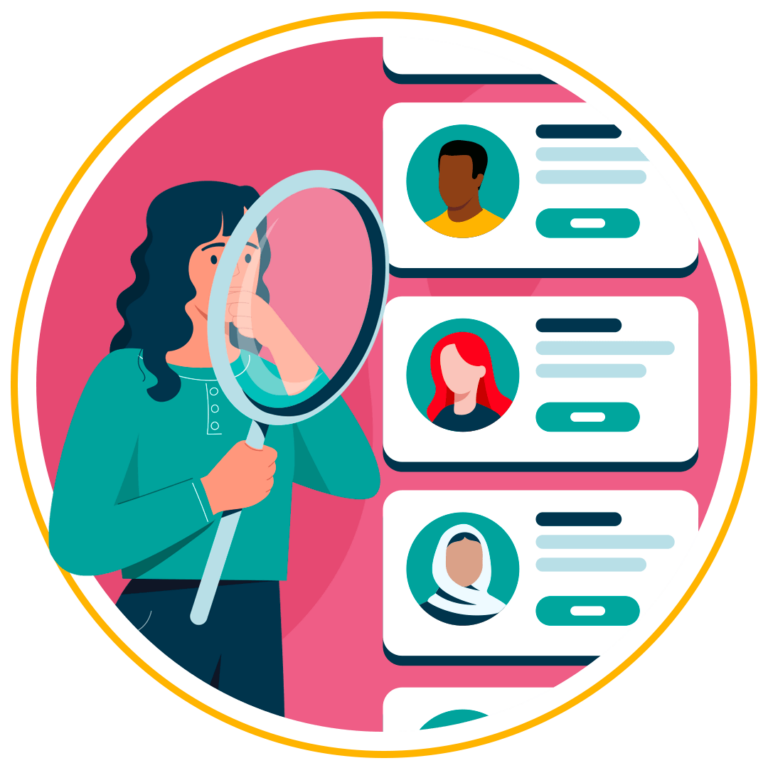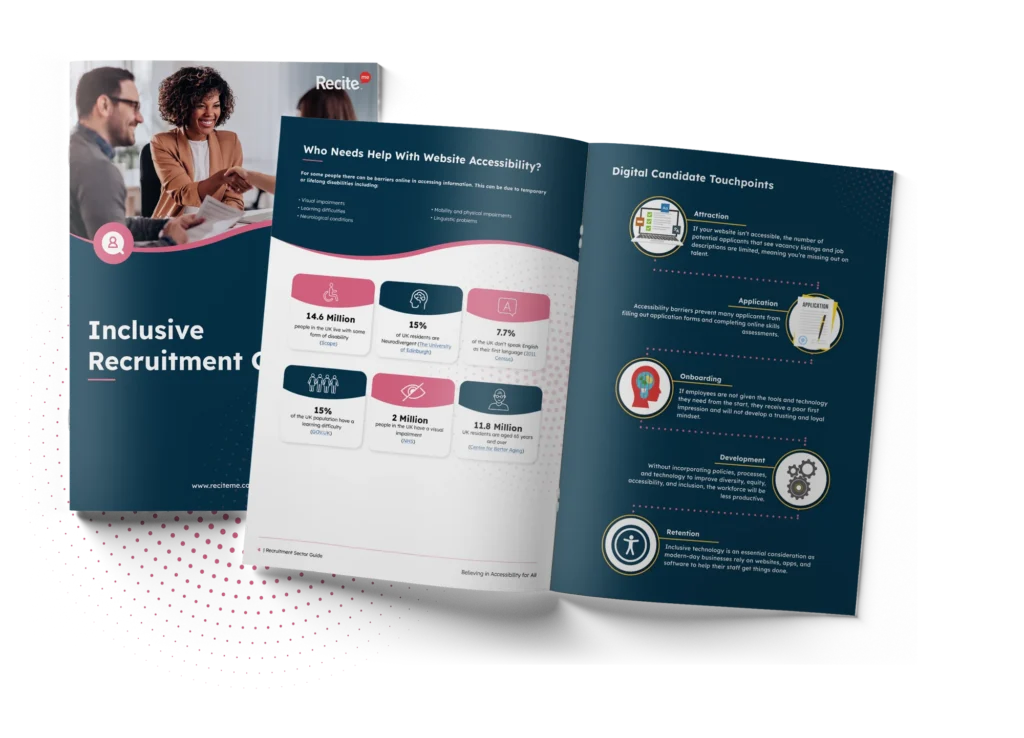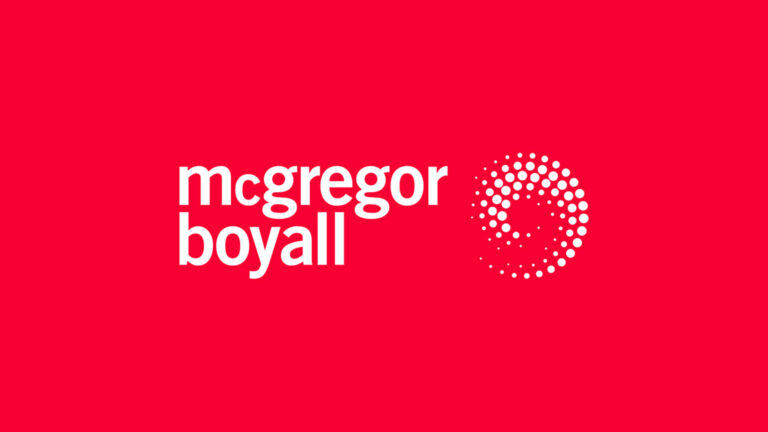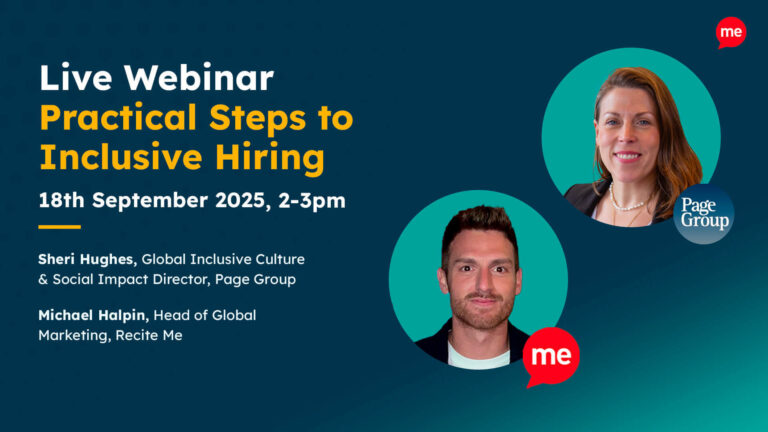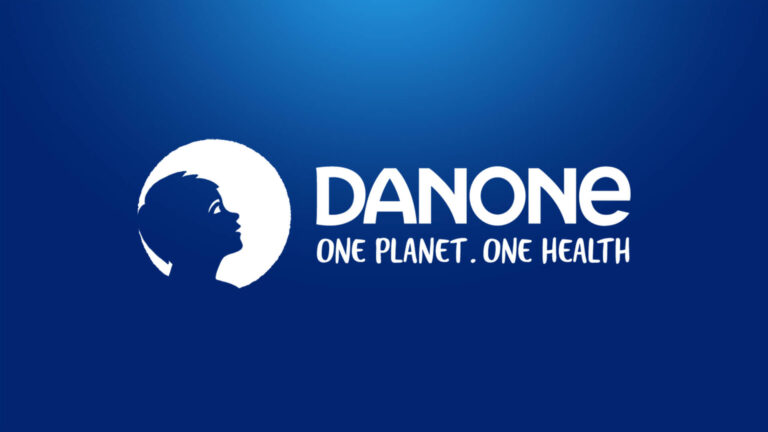Get Your Free Inclusive Recruitment Checklist
Download NowIn the United Kingdom, job applicants are protected against discrimination by the 2010 Equality Act. However, despite this over one third (34%) of adults in the UK felt they had been discriminated against when applying for a job. This article will provide an overview of the impact discrimination can have on applicants and the business, followed by actionable steps you can take to improve your recruitment processes.
What are the types of discrimination?
Discrimination can take many different forms, for most people it usually manifests itself as unconscious bias. Whereby the individual does not necessarily recognise they are discriminating against another person, but unconscious thoughts, feelings and stereotypes affect their decision making and actions. Although, for some discrimination can unfortunately be an intentional action, whereby they directly discriminate against someone based on physical characteristics, their values and beliefs.

There are some characteristics that individuals are protected from discrimination against during the recruitment process, these are:
- Age Discrimination: This occurs when someone is treated unfavourably due to their age. It can affect both younger and older individuals in different employment scenarios.
- Sex Discrimination: Discrimination based on sex or gender involves treating someone unfairly or unfavorably because of their sex or gender identity. This can include discrimination against women, men, transgender individuals, or non-binary people.
- Race Discrimination: Race discrimination occurs when someone is treated unfairly because of their race or ethnicity. It involves prejudiced attitudes or actions against individuals or groups based on perceived racial characteristics.
- Disability Discrimination: Discrimination against individuals with disabilities involves treating them less favorably than others due to their disability. It includes physical, mental, sensory, or cognitive disabilities.
- Sexual Orientation Discrimination: This form of discrimination occurs based on a person’s sexual orientation, such as being lesbian, gay, bisexual, or heterosexual. It involves unfair treatment or harassment due to one’s sexual orientation.
- Religious Discrimination: Religious discrimination involves treating individuals unfairly because of their religion or religious beliefs. It can include harassment, unequal treatment, or denial of opportunities based on religious affiliation.
- National Origin Discrimination: Discrimination based on national origin occurs when individuals are treated unfavorably due to their country of origin, nationality, ethnicity, or accent. It includes biases against immigrants or individuals perceived as foreigners.
- Gender Identity Discrimination: This form of discrimination involves treating individuals unfairly because of their gender identity or expression, including transgender or non-binary individuals. It includes harassment, denial of opportunities, or unequal treatment based on gender identity.
- Pregnancy Discrimination: Discrimination against pregnant individuals involves treating them unfairly due to pregnancy, childbirth, or related medical conditions. It includes biases in hiring, promotion, or termination based on pregnancy status.
- Marital Status Discrimination: Discrimination based on marital status occurs when individuals are treated unfairly because of their marital status, whether single, married, divorced, or widowed.
Download our Inclusive Recruitment Guide
Break down digital barriers and attract the best talent for your business!
Discover hidden talent and recruit from a larger talent pool by providing assistive technology. Support your potential candidates who may be disabled, visually impaired or who speak English as a second language to research and apply for jobs online.
Best practices to eliminate discrimination in hiring processes
Eliminating discrimination in hiring processes requires a proactive approach and a commitment to fairness and equality. But when implemented correctly, the benefits for your organisations and its employees can be huge. Helping to showcase your organisation as having a strong employer brand. Here are some of the best practices you should follow when creating the perfect hiring process.
Accessible Online Application Processes
Millions of people around the world with disabilities struggle to access information and resources on the internet. This presents a challenge for application processes, as many are based in the digital world. If your website is inaccessible then it could prevent people with certain disabilities from applying.
Accessibility tools like our assistive toolbar and accessibility checker can help minimise the likelihood of this issue happening. Our toolbar integrates with your website, allowing for a customisable experience that helps solve many of the issues that disabled people face. Additionally, an accessibility checker can be used to highlight and fix inaccessible website design, solving the problem at its root cause.

Training for Hiring Managers
Training your hiring managers can help provide them with tools and knowledge that they need to limit discriminatory practices. Training around diversity and inclusion in recruitment would be important, as well as general recruitment training around the impact of unconscious bias.
The training should help raise awareness around the issue, but also provide actionable strategies and procedures that can be used in the hiring process.

Blind recruitment strategies
Implementing blind recruitment techniques involves removing identifying information from job applications and resumes to ensure that hiring decisions are based solely on qualifications, skills, and experience. The goal is to mitigate biases related to factors such as name, gender, age, ethnicity, or educational background that may unconsciously influence recruiters’ judgments.
Blind recruitment can take various forms, including anonymized resumes, where identifying information is removed before applications are reviewed. Additionally, blind screening processes can be implemented, where candidates’ identities are concealed during initial screenings and assessments. Furthermore, blind recruitment may extend to other stages of the hiring process, such as structured interviews where standardised questions are used to assess candidates objectively, without influence from personal biases.
Reasonable adjustments
Reasonable adjustments in the recruitment process refer to modifications or accommodations made to ensure that candidates with disabilities or specific needs can participate fully and fairly in the hiring process. These adjustments are essential for promoting equal opportunities and avoiding discrimination against individuals with disabilities.
Examples of reasonable adjustments may include modifying assessment methods or providing assistive technologies to enable candidates with cognitive or learning disabilities to demonstrate their skills effectively. Additionally, offering flexibility in the timing or format of interviews to accommodate candidates with mobility issues or scheduling conflicts can be crucial.
Diverse Hiring Team
Diverse hiring panels play a crucial role in eliminating discrimination in the recruitment process by bringing varied perspectives, experiences, and insights. Firstly, a diverse panel can help mitigate unconscious biases that may exist among individual members. Different backgrounds, identities, and viewpoints represented in the team can challenge stereotypes and prevent discriminatory judgments based on protected characteristics.
Additionally, diverse hiring panels demonstrate the organisation’s commitment to inclusivity and equality. When candidates see a panel that reflects diversity in gender, race, ethnicity, age, and other dimensions, it sends a powerful message about the company’s values and commitment to providing equal opportunities for all individuals.
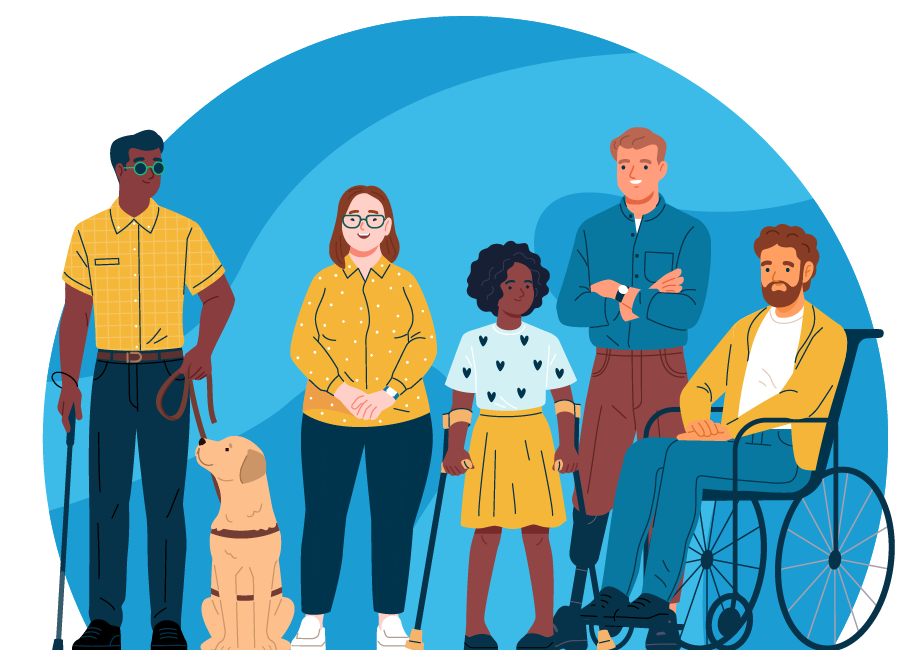
Cases where discrimination can be justified
There are some rare instances where the lines between what is discrimination and what is not become blurred. In some cases discrimination can be justified if it is based as a proportionate means of achieving a legitimate aim.
A specific example of this in action would be for manual labour job roles. Whereby physical disabilities that affect motor function and mobility would significantly impact the individuals ability to perform the requirements of the job role. It would be difficult to expect someone in a wheelchair would be able to safely and effectively perform the job function of a builder or oil rig worker.
This example would be justified as a “proportionate means of achieving a legitimate aim” in most cases.
Positive Action
Positive action refers to the proactive measures taken by organisations to address underrepresentation or disadvantage faced by certain groups in the workforce. Unlike positive discrimination, which involves favoring one group over another, positive action aims to promote equality of opportunity and diversity by providing targeted support to individuals from underrepresented or disadvantaged backgrounds.
This makes it possible and justifiable for recruiters to select an applicant who has characteristics that are under-represented or disadvantaged in the employer’s current workforce. However, they must equally meet the requirements and skills required to complete the job role effectively and those requirements that were stated in the job description.
Attract the best talent for your organisation by becoming an inclusive employer!
Inclusive recruitment doesn’t have to be complicated. This checklist breaks down everything you need to know to attract and retain diverse candidates. Download your checklist today and get started right away.
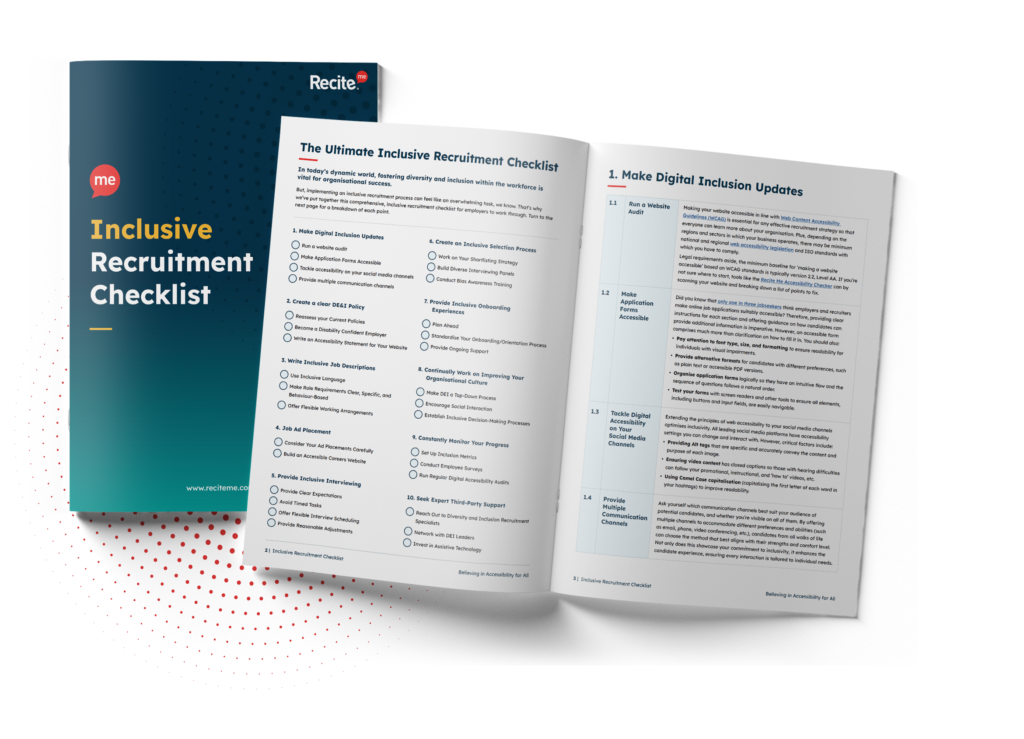
Tools for more Inclusive Recruitment
At Recite me we offer a range of accessibility tools to help improve the inclusivity of your recruitment strategy. This includes our Accessibility Toolbar and Accessibility Checker, of which more information about them can be seen below.
Accessibility Toolbar
The Recite Me Accessibility Toolbar is a simple software that installs on to your website to help make it more inclusive. This can be important for the recruitment process as it allows users to customise your website in a way that works best for them. Some of the main features include:
- Personalising font size, type, and colour options.
- Choosing the exact colour contrast between the text and background.
- Utilising the mask screen tool to help with focus.
- Using the ruler tool to make reading easier.
- Downloading content as an audio file as an alternative to reading.
- Converting page content into over 100 on-screen languages.
- Having the page read aloud in a choice of 65 languages.
- Customising PDF documents or having them read aloud/ translated.
- Zooming in on any part of a webpage.
- Using the built-in spell-checker and a fully integrated dictionary and thesaurus.
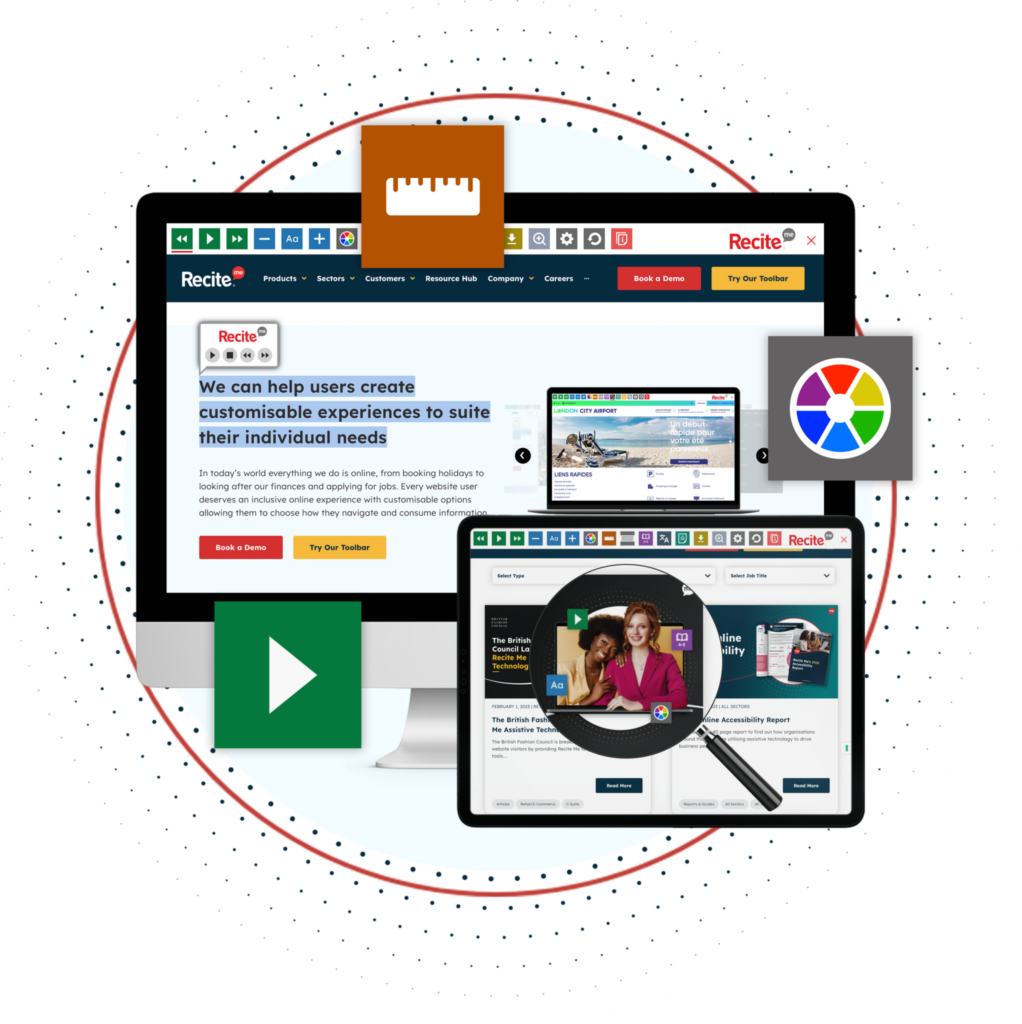

Accessibility Checker
Our Accessibility Checker can help address inaccessibility at its root cause. As the tool performs a complete scan of your website in line with the latest WCAG standards and guidelines. By following a simple four step process to help improve your websites accessibility:
- Step 1: Scan Your Domains – Choose between scanning single or multiple pages.
- Step 2: Identify Accessibility Issues – Identify the locations of accessibility issues on your website.
- Step 3: Fix Accessibility Errors – Boost your accessibility score by prioritising fixes in line with WCAG Levels A, AA, and AAA.
- Step 4: Track Your Progress – Create and share custom reports with your team and roadmap the next issues in your fix queue.
